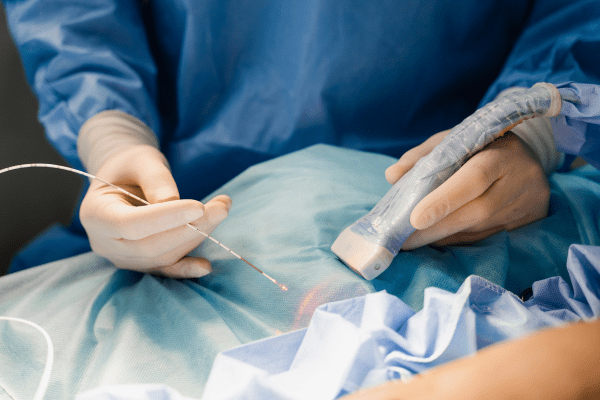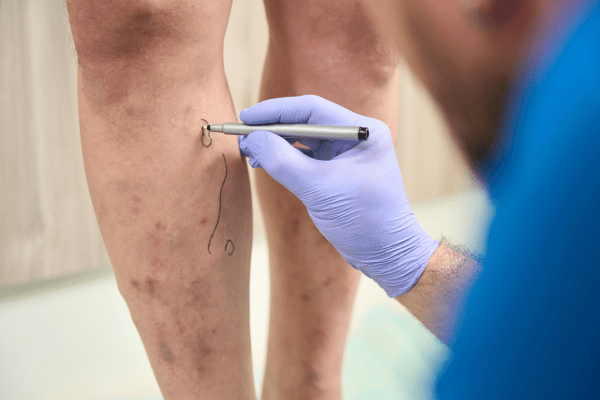Exercise for Varicose Veins: A Detailed Guide That Actually Helps
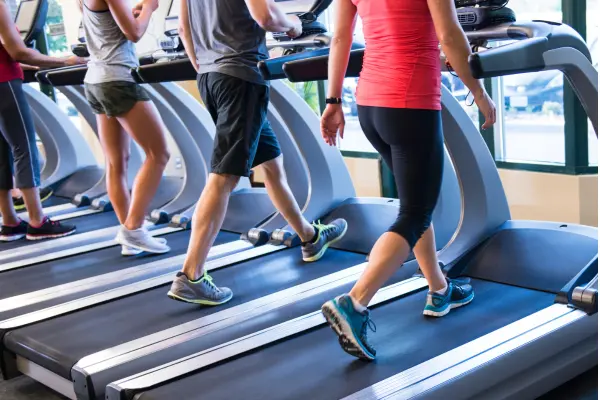
Varicose veins no longer belong to the older generation. Young office workers all over the world now visit clinics with swollen legs, cramps, and bulging veins after long hours of sitting.
Long commutes, long laptop sessions and long-standing hours in jobs keep the legs still leading to slow blood circulation which builds Pressure inside the veins.
What varicose veins are and how the problem begins
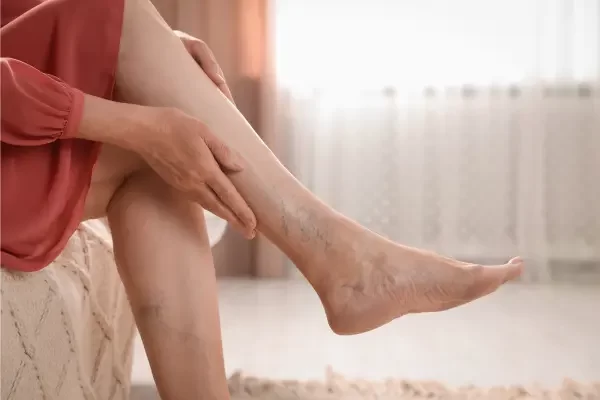
Veins carry blood back to the heart with the help of one-way valves. These valves open to let blood move upward and close to stop it from falling backward. When these valves weaken, blood leaks downward. Pressure rises. The vein stretches and becomes visible near the skin.
Common symptoms include heaviness, ankle swelling, night cramps, burning near the calf or itching near the ankle. Some feel symptoms only in the evening. Others feel them after long standing hours.
Think of it like a pipe with weak flaps. When pressure increases, the pipe bulges. That is what your leg veins experience.
Why exercise for varicose veins helps even though it cannot fix damaged valves
- Exercise supports your veins in two practical ways.
- First, it activates the calf pump. Your calf muscles are the main engine that pushes blood upward. Each step squeezes the deep veins and forces blood to move toward the heart. When the foot relaxes, the veins refill. This squeeze and refill cycle works like a piston.
- The calf pump switches off when you sit still for about ninety minutes. When that happens, blood settles in the lower legs and pressure builds. A short walk restarts the pump. Even ankle movements help.
- Second, exercise improves venous return. Better blood flow reduces stagnation. Less stagnation means less heaviness and swelling.
- Exercise cannot repair a faulty valve or shrink an already stretched vein. What it can do is keep pressure lower so symptoms stay manageable.
Review on how physical exercise affects venous function and varicose veins – Reference ResearchGate
Why symptoms are appearing early in Mumbai or similar cities
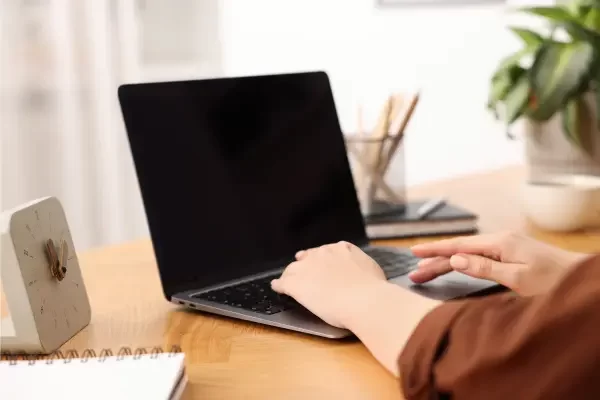
Many young people spend most of the day in fixed positions.
- One hour sitting in trains or cabs.
- Eight to nine hours at a laptop.
- Another hour or two on screens before bed.
Retail and hospitality workers stand for long stretches without moving. Standing still does not activate the calf pump. Blood collects in the lower legs.
Mumbai’s Working Lifestyle And Its Impact On Varicose Veins – Reference MidDay
Humidity adds to the problem. Warm environments cause veins to widen, which makes symptoms more noticeable.
Which exercises for varicose veins are recommended

WALKING IS THE SINGLE BEST EXERCISE FOR VARICOSE VEINS
Walking produces the most reliable improvement. A clear heel to toe motion activates the calf pump with each step. It’s ideal for all fitness levels.
Short walking breaks work better than one long walk.
• Five minutes every hour
• Ten minutes after meals
• Quick steps during phone calls
Tiny sessions spread across the day reduce evening heaviness far better than one intense workout.
The nurse study that supports this
A 2023 study on hospital nurses showed a clear pattern. Nurses who walked fast between wards had fewer vein problems than those who stood still for long hours. It was not about age or long shifts. It was about movement. Race-walking nurses kept the calf pump active. Static nurses did not. According to PubMed – Prevalence of Varicose Veins and Its Risk Factors among Nurses Working at King Khalid University Hospital Riyadh, Saudi Arabia: A Cross-Sectional Study.
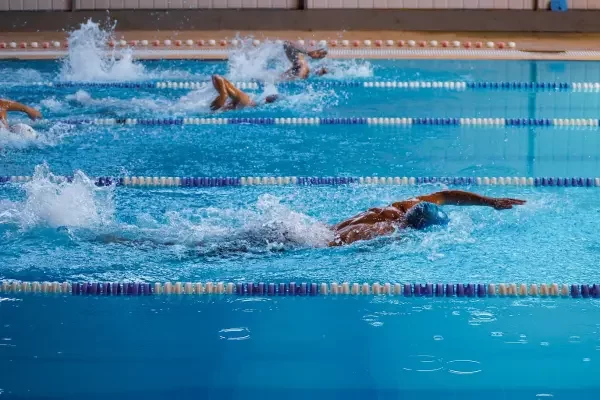
SWIMMING
Water supports the legs and provides gentle compression. Cold water works better than warm water because cooler temperatures cause veins to tighten slightly. Warm water does the opposite.
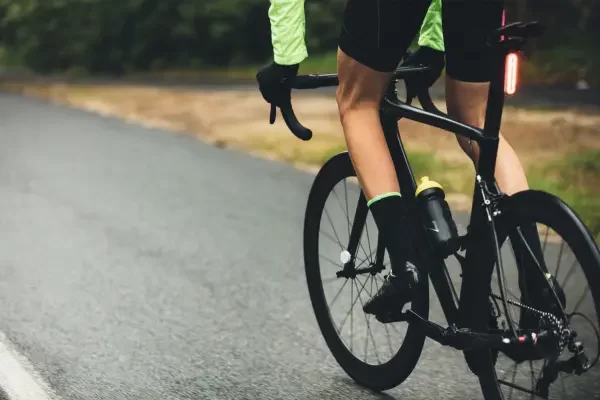
CYCLING
Outdoor or stationary. Smooth movement. Moderate resistance.
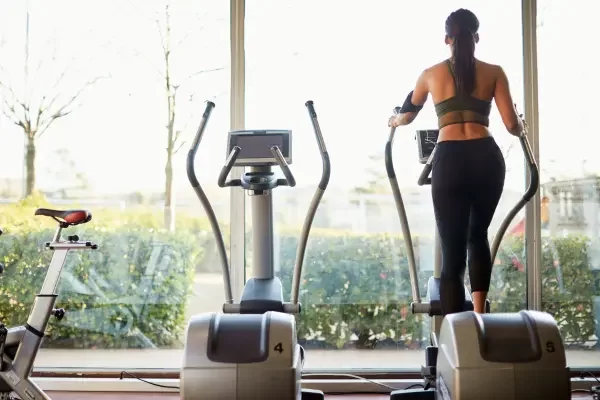
ELLIPTICAL
Low impact. Good for those with knee discomfort.
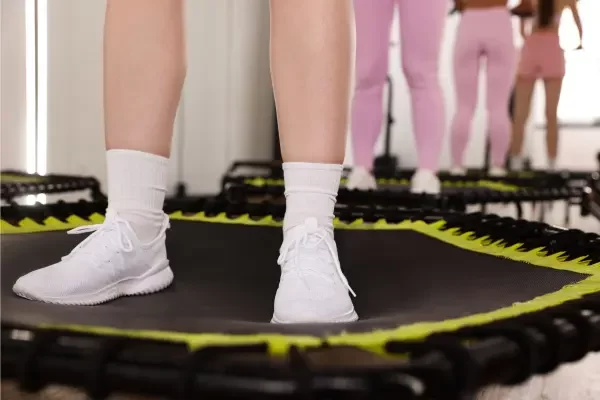
REBOUNDER OR MINI TRAMPOLINE
Gentle bouncing only. No high jumps. It is normally assumed that bouncing is risky because they associate it with high impact. In reality, rebounding is low impact if the bounce stays small. The trampoline absorbs most of the force. The slight rise and fall create a G-force shift that helps the lymphatic system clear fluid without the concrete shock of running.
Home exercises for varicose veins suited for city houses/flats

Space. A commodity which is in short supply especially in cities like Mumbai. Small living spaces normally do not allow you to adopt a full-scale exercise regime. Though that’s not an excuse for exercises which can help you with varicose veins. Simple exercises can go long way for you.
- Foot pumps. Lift toes then heels.
- Ankle circles. Slow rotations.
- Calf raises. Rise and lower with control.
- Leg raises. One leg at a time.
- Marching in place. Quick and useful.
Spread these across the day.
Desk exercises for varicose veins for office workers
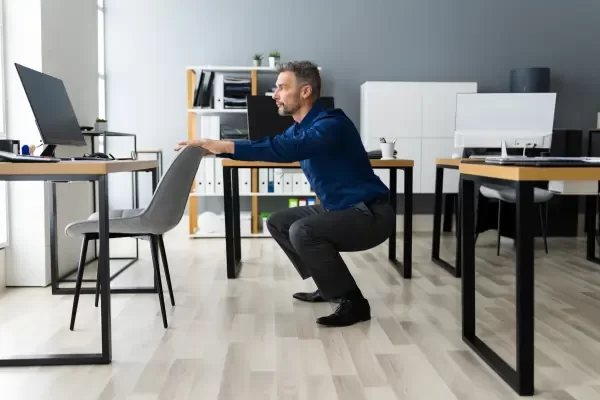
These movements keep circulation active without attracting attention.
- Toe taps under the desk
- Ankle circles while working
- Seated leg extensions
- Calf raises during breaks
- Light squats if space allows
Each move restarts the calf pump.
Stretching that improves comfort

- Hamstring stretch
- Quad stretch
- Legs up the wall
- Bridge pose
- Mountain pose
- Pilates leg circles
Hold each stretch fifteen to twenty seconds.
Red light exercises for varicose veins to avoid or modify

Some activities raise abdominal pressure and block upward blood flow from the legs.
Avoid or modify:
- Heavy squats or deadlifts that make you strain – Holding your breath while lifting heavy (squats/deadlifts) increases intra-abdominal pressure. This actually acts like a tourniquet, stopping blood from returning to the heart.
- If you choose weights, use lighter loads and breathe out during the effort.
- Running on hard concrete
- Jumping routines
- Long standing sessions without movement
- Hot yoga in warm rooms – Heat causes the widening of veins causing pooling of blood.
Starting your routine safely
- Start with five to ten minutes of walking
- Add one minute every few days
- Warm up with ankle rolls
- Cool down with stretching
- Stay hydrated
- Wear supportive shoes
- Use compression stockings if advised
Morning exercise often feels easier because legs are less swollen. Though we understand that morning is rush hour so do these in the evening – its not half as bad either.
Daily habits that support your exercise routine
- Raise your legs for a few minutes after activity
- Avoid crossing your legs for long periods
- Take movement breaks during office hours
- Choose non-restrictive clothing
- Eat whole grains, greens, citrus fruits and omega 3 foods
- Avoid long sitting hours during weekends
These habits reduce venous pressure and support circulation.
What exercise for varicose veins cannot do
Exercise improves symptoms and slows progression. It cannot close damaged valves.
Expert View
“Most patients assume varicose veins appear only later in life. I see many young professionals walk into my clinic with swelling and visible veins triggered by long sitting hours. Movement is your first line of control. A simple walk every hour keeps the calf pump active. Exercise will not repair damaged valves, but it prevents symptoms from spiralling. I tell my patients to treat movement the same way they treat hydration. Small and frequent works best.”
— Dr. Bhavesh Popat, Vascular and Inteventional Radiologist, Mumbai
When you should consult a specialist
Seek medical review if you notice:
- Sudden swelling
- Skin color changes
- Bleeding from a vein
- Wounds near the ankle
- Severe cramps or burning
A vascular specialist (interventional radiologist) will guide you with proper testing.
Modern treatment options
- Endovenous Laser Therapy
- Radiofrequency Ablation
- Sclerotherapy
- Echotherapy or SpeedPulse
Click here to understand more about the condition and varicose veins treatment options. Most treatments are day procedures.
A rule that works for almost everyone
Move often ( Even five minutes helps). Your veins respond to regular activity, not heavy workouts.
Frequently Asked Questions
Is Physical Exercise a Substitute for Varicose Vein Treatment?
No. While exercise effectively manages symptoms and prevents progression, it cannot repair damaged valves or eliminate existing varicose veins.
How Often Should One Exercise If Have Varicose Veins?
Aim for at least 30 minutes of moderate-intensity exercise most days of the week—ideally 5-6 days weekly. Consistency matters more than intensity.
Is It Safe to Exercise with Painful Varicose Veins?
Yes, with modifications. Low-impact activities like walking and swimming are typically safe even with painful veins.
Are Compression Stockings Necessary While Exercising?
While not always necessary, they provide additional support and enhance exercise benefits.
Should I Avoid the Gym If I Have Varicose Veins?
No. You can exercise at the gym but avoid contraindicated activities. Stationary bikes, elliptical machines, and swimming pools offer excellent options. Avoid heavy free weights and extreme resistance exercises.
Can Yoga Help with Varicose Veins?
Yes. Specific yoga poses improve circulation, strengthen legs, and reduce inflammation. However, avoid poses that compress your abdomen excessively or invert your body for extended periods without proper support.
How Soon Can I Expect Results from Exercising?
Most people notice improved symptoms within 2-4 weeks of consistent exercise. Significant improvements typically occur within 8-12 weeks. Individual results vary based on condition severity and consistency.
Can Varicose Veins Develop Even If I Exercise Regularly?
Genetics, age, and hormonal factors significantly influence varicose vein development. While regular exercise majorly reduces risk and manages symptoms, it cannot prevent development entirely in genetically predisposed individuals.
Is It True That People with Varicose Veins Should Avoid Leg Workouts?
No. In fact, leg exercises are beneficial. Avoid only high-impact or heavy resistance exercises.
Is It Possible for Exercise to Reverse Damaged Vein Valves?
Unfortunately, no. Damaged valves cannot be repaired through exercise. However, strong surrounding muscles provide structural support that improves vein function despite valve damage.
What Should I Do If Swelling Increases After Exercise?
Minor swelling that resolves within a few hours is normal. However, significant swelling that persists warrants medical evaluation. Ensure you’re not overexerting, reduce intensity and duration. After exercise, elevate legs above heart level for 15-20 minutes.

